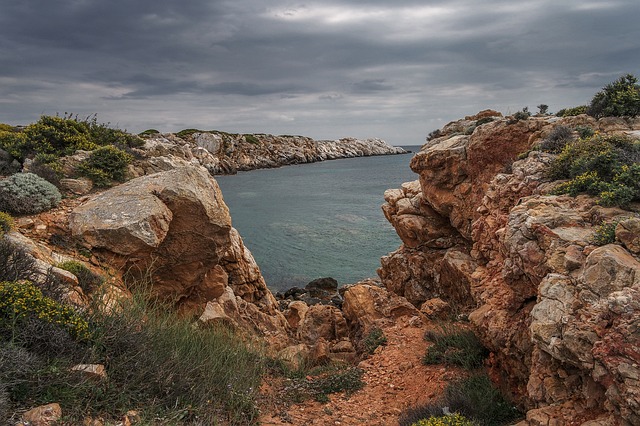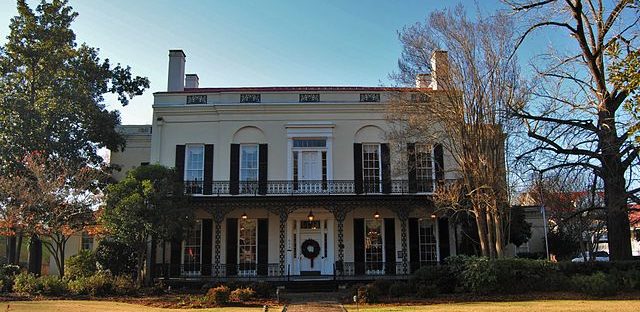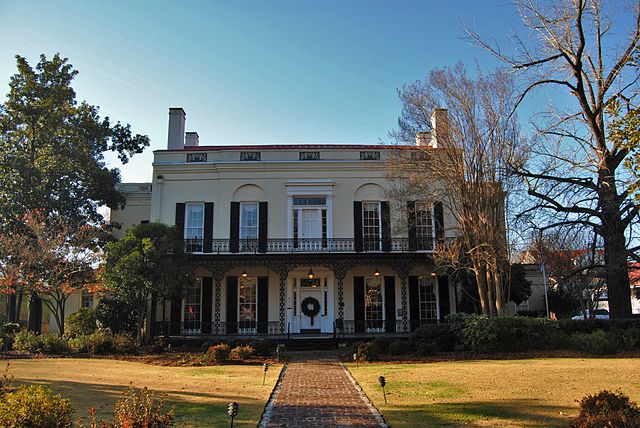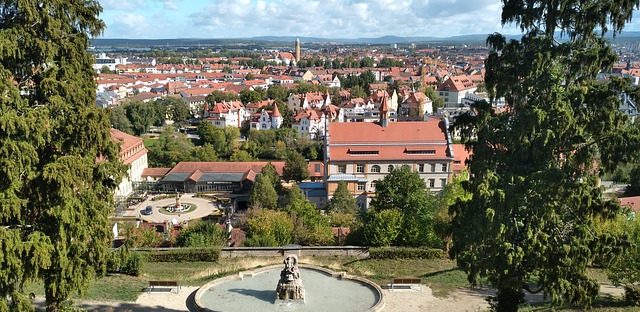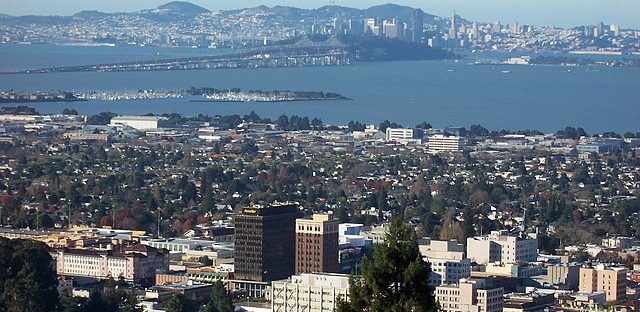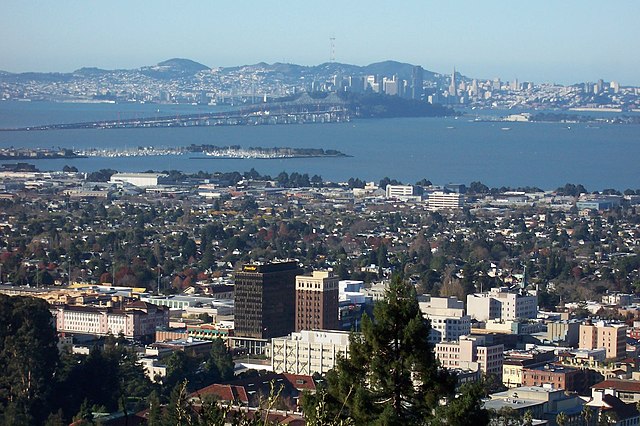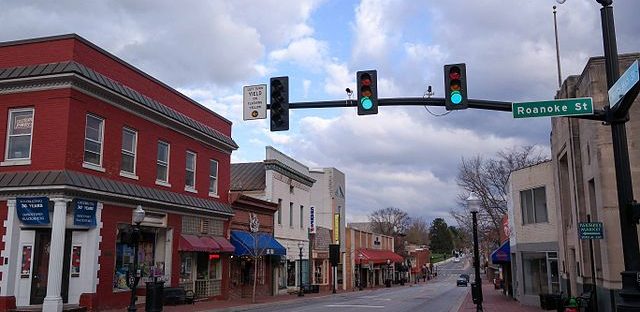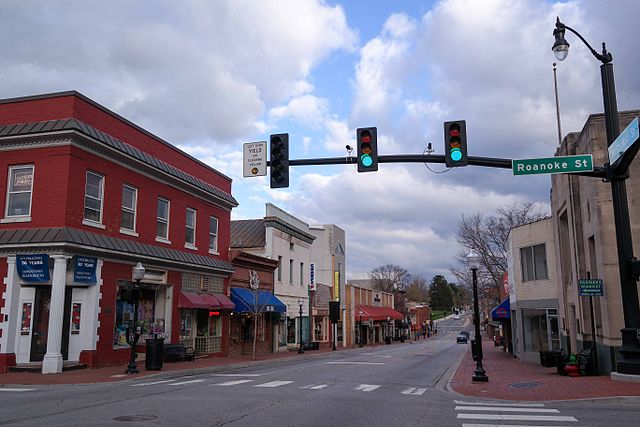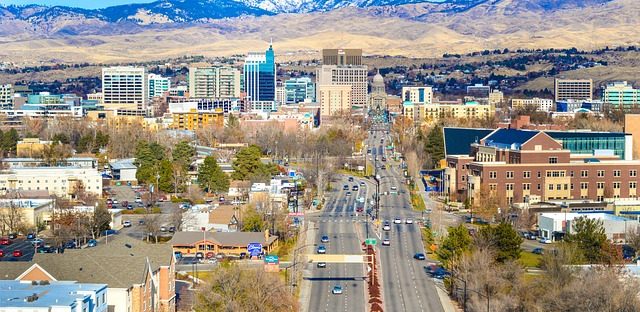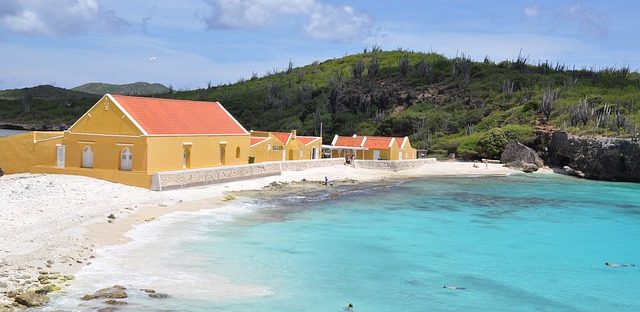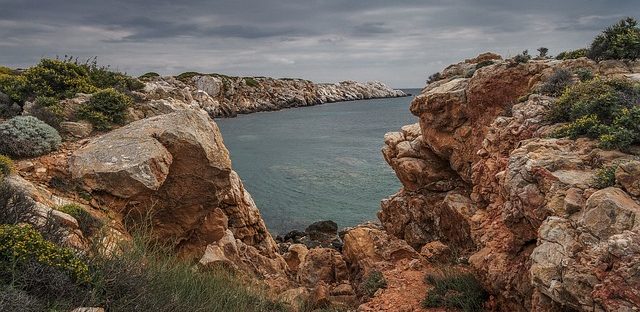- Target: 100% renewable electricity by 2050
- Status: In progress
- RES: Solar power and energy efficiency improvements
- Implementation: Augusta, GA is committed to achieving 100% renewable electricity by 2050. The clean energy movement was founded on anti-pollution advocacy which began in the 1970s, when several neighbourhoods in Augusta did not receive public services, like water, streetlights, or an adequate sewage system. Locals began working with Blue Ridge Environmental Defense League, and rallied to approach the county commissioner with the zero waste idea. With the support of Augusta University, Paine College, board or education, and the city engineering department, the resolution was passed.
In 2018, the Augusta City Commission approved a resolution to set a goal of 100% renewable energy by 2050. The city hopes to reach 80% renewable energy by 2030. Augusta’s timeline was put on hold due to the pandemic. However, the city is still working on an implementation plan. So far, the city has added solar panels to the construction of a new school, along with the most efficient windows. Upgrades are helping the city to realize cost-savings from the clean energy transition. With Georgia Power, the local utility is helping with education programs and provides scholarships for students. The programs teach topics on recycling and clean energy. The utility also funds the Blue Ridge Environmental Defense League, which provides efficiency upgrades for the most affected communities. This is done via loans that are matched by Blue Ridge through fundraising activities.Source: ilsr.org - Population: 197,888 (2019)
- Area: 306.5 sq mi (793 km2)
- Link: Resolution in Support of a Goal of 100% Clean Energy by 2050
Author: 100%RE
Bamberg, Germany
- Target: Energy self-sufficient by exclusively relying on renewable energies, by 2035.
- Status: In progress
- RES: Solar and wind-powered systems, block heating stations, woodchip heating systems, and electric vehicle charging stations.
- Implementation: The city of Bamberg's strategy to produce energy independently is embedded in its climate change strategy and is integrated into the sustainable development of Bamberg. It has already financed a combination of solar and wind-powered systems, block heating stations as well as woodchip heating systems. In 2009, the Fraunhofer Institute analyzed the resource potential of the city and different scenarios were investigated to optimize the process of RE development. It laid the groundwork for finding the best energy models for the area. The plan would serve 210,000 people for both for electricity and heat.As a member of ”climate alliance”, the city cooperates with surrounding municipalities. The idea is that both the city and its region would benefit from the energy transition: the city has a reliable supply of renewable energy and the surrounding rural areas is the energy producer, generating income, allowing the development of new business models, and well distributed profits among municipalities. In fact, the city of Bamberg would not have been able to achieve its RE goal if it wasn’t for the rural support, considering the limited urban space. The city involved the industry and engineering sectors in the planning process, as well as the participation of the local community, with processes being guided by the city government. In 2011, the Climate and Energy Agency Bamberg was established to serve as the office of the Climate Alliance Bamberg. In 2012, the city along with 31 municipalities formed the ,,Regionalwerke Bamberg GmbH’’ to combine strategic efforts. Energy consultancy and analysis tools for electricity and heat applications of private households were introduced and more than half of the towns in the area have set up electric vehicle charging stations.
- Population: 77,179 (2017)
- Area: 54.62 km2 (21.09 sq mi)
- Link: Bamberg is switching to renewable energy
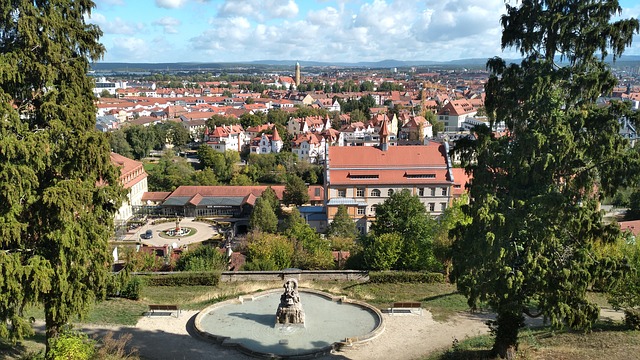
- In German
Bamiyan, Afghanistan
- Target: To supply power to remote communities.
- Status: In progress - The Bamiyan Renewable Energy Program (BREP) developed a large-scale, solar photovoltaic (PV) mini-grid, and by 2017 began generating 1 MW of electricity to more than 3,500 businesses, homes and government offices.
- RES: Solar PV with battery storage and diesel backup. BREP uses a prepaid, pay-as-you-go model to collect revenue, with each house being equipped with a digital meter.
- Implementation: The mini-grid was funded by the New Zealand Ministry of Foreign Affairs and Trade and built by a joint venture of two New Zealand companies, Sustainable Energy Services International (SESI) and NetCon. After construction, project developers transferred the system to Da Afghanistan Breshna Sherkat (DABS), Afghanistan’s national utility that now owns and operates the system. SESI and NetCon helped DABS operate the system for the first year after installation.
- Population: 100,000
- Area: 35 km²
- Link: After the Taliban: taking solar energy to remote parts of Afghanistan

Beaverton, Oregon, USA
- Target: Achieve 100% renewable energy target including all public buildings, streetlights, and the water supply. 80 percent carbon emissions reduction below current levels by 2050, with a near-term emphasis on 40 percent reduction by 2030.
- Status: Achieved - Since 2014, 100% of electricity fed into the city's grid comes from wind power sources. It is the only city in the state of Oregon that procures all of its power, for civic operations, from Portland General Electric’s (PGE) renewable energy program.
- RES: Windpower and solar.
- Implementation: In the first instance, Beaverton created an Energy Map for the base year of 2012, and researched existing and proposed state laws. To achieve the energy target, the electricity that Beaverton uses is not sourced from renewable energies produced in the town, but through investments in renewable electricity, which offset the consumed power in the city. Beaverton teamed up with PGE to purchase renewable energy offsets equivalent to all of the electricity demands for the city. The renewable energy purchased powers the city’s street lights, traffic signals and water pumping. PGE acts as a public consultant and encourages the community to switch to 100% renewable energy via different green products and packages which they can can select according to their needs. Competitions and projects enhance the level of participation of community members, such as the Beaverton Better Buildings Challenge (Beaverton BBC) which aims to improve energy efficiency in local buildings 20% by 2020. The city provides participants of the program free energy consultation, assistance prioritizing efficiency projects and support with utility data tracking tools.
- Population: 89,803
- Area: 48.51 km²
- Link: Beaverton Climate Challenge
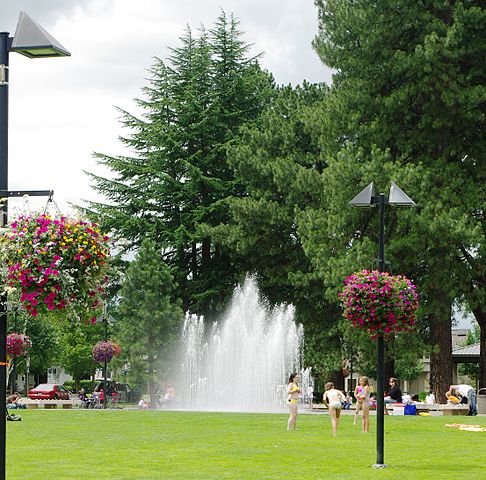
Berkeley, California, USA
- Target: 100% carbon-free energy in electricity, transportation and buildings by 2030, 100% renewable energy by 2035, and net-zero carbon emissions by 2050
- Status: In progress
- RES: Renewable electricity procurement, solar and wind power
- Implementation: The City of Berkeley is committed to 100% renewable energy, as a strategy to mitigate greenhouse emissions and reduce the impact of climate change. The goal followed legislation signed by Gov. Jerry Brown pledging 100 percent clean energy use in California by 2045 and the University of California committing to 100 percent clean electricity use by 2025 and reducing energy use by 2 percent each year through its Carbon Neutrality Initiative.
The city instituted the Berkeley Climate Action Plan, with the vision to reach net-zero energy use for all buildings by 2050 by requiring building owners to assess their energy use, and prioritize sustainable forms of transportation, such as walking, cycling and public transportation. The city also participates Community Choice Energy program, which allows local governments to buy and sell energy — an option that is often cleaner and cheaper for local residents. Berkeley has joined an initiative providing greater access to energy-efficient cars and infrastructure at a lower cost. With other Bay Area cities, the city calls for the end coal shipments. Source: dailycal.org - Population: 121,363 (2019)
- Area: 17.66 sq mi (45.73 km2)
- Link: Recommendations for a Fossil-Fuel Free Berkeley
Blacksburg, Virginia, USA
- Target: 100% electricity community-wide by 2050
- Status: In progress
- RES: Solar power
- Implementation: Blacksburg City Council in Virginia is transitioning to 100% renewable electricity community-wide by 2050 through a series of “solarize” campaigns. It launched the Solarize Blacksburg program to encourage more city residents to go solar by addressing the financial and logistical barriers to installing solar power. The city worked with installers to lower the costs of solar arrays by 16 percent. A neighborhood collective purchasing program was established for the city's communities. Unlike other solarize models which usually start with a neighborhood or team of neighbors getting together to form a co-op, and then vet and choose a contractor that will perform all of the solar installations, the Solarize Blacksburg model involved finding the contractors upfront, getting the companies to agree on specific pricing options and technical specifications, and then letting the community drive the demand. The model succeeded in quadrupling residential solar within 6 months. Despite it being home to Virginia Tech with 70 percent renter-occupied housing, and unfavourable state energy policies for solar, the model worked well. The follow-up program Solarize Montgomery was also very successful, with more than 800 subscribers.The two solarize programs were implemented as one-time programs to avoid the impression that the programs were ongoing which could have resulted in potential participants postponing the decision to sign up. In fact, after a program ended, the adoption of solar continued. Systems already installed in the community encouraged more residents to install solar power. In Montgomery County, solar use grew by 273 percent within three years. Since 2015, residential solar has more than doubled across the state of Virginia, and at least 25 other Virginia communities have created their own solarize programs. Source: governing.com
- Population: 44,233 (2019)
- Area: 19.77 sq mi (51.20 km2)
- Link: 100% Renewables Resolution
Boise, Idaho, USA
- Target: 100% renewable electricity community-wide by 2035
- Status: In progress
- RES: Hydropower, solar, and geothermal energy
- Implementation: Boise City Council in Idaho is committed to a 100% renewable electricity and has adopted the "Boise's Energy Future" plan to reach this goal. It builds on an earlier municipal target set by its mayor David Bieter of 100 percent clean electricity for city-owned buildings by 2030, as well as the goal set by Idaho Power, the electricity utility for the City of Boise 100 percent clean energy system-wide by 2045. The Boise’s Energy Future plan was developed over a year by the city with community organizations and businesses including local utilities. It involved extensive public outreach, including a citywide survey in partnership with Boise State University. The survey revealed that almost 80 percent of citizens either strongly or somewhat agree with the city’s goals to reduce energy use and transition to clean energy. For the city, it was imperative that the 100 percent target emphasises "affordability and equity in access to energy efficiency and clean energy for all residents.” Local renewable energy and technology would help grow its economy, creating good jobs, afford better energy choices for users, and improve public health.
The city's plan lists several cost-effective electricity strategies. It includes supporting new electricity generation, increasing consumer participation in efficiency programs and Green Power Program, encouraging rooftop and community solar installation, and procuring green power for municipal buildings. Source: Boise's Energy Future Plan - Population: 228,959 (2019)
- Area: 84.73 sq mi (219.45 km2)
- Link: Boise Energy Plan
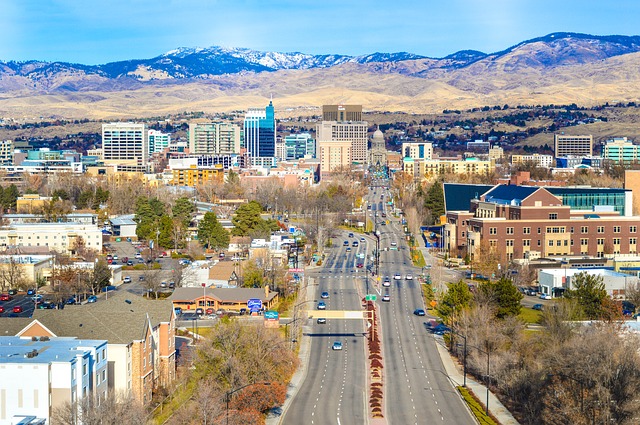
- © Pinpals
Bonaire, Caribbean Netherlands
- Target: 100% of renewable energy in the electrical system.
- Status: In progress
- RES: Hybrid wind-diesel power plant
- Implementation: The Caribbean island of Bonaire is located 80km north of the Venezuelan coast. Its energy transition began in 2004 after the island’s sole diesel power plant was destroyed by a fire. Instead of re-building it, the government decided to convert Bonaire’s electricity system to one based on 100% renewable energy sources. The decision was driven by several aspects. Bonaire has close ties to Europe (being a special municipality of The Netherlands) where the share of renewable sources of electricity has been increasingly expanding. Financial support for the transition would come from Dutch Rabobank. The complete destruction of the old electric system presented an opportunity to build something new and innovative. So, while rented diesel generators served as a temporary power supply, the Bonaire government and the local utility closely collaborated in the planning of the energy transition. In 2007, the consortium “EcoPower Bonaire BV” signed the contract with the government-owned Water and Energy Company Bonaire (WEB) to construct a new green energy system, including wind power and biodiesel from algae. In August 2010, the world’s largest hybrid wind-diesel power plant went online. 12 wind turbines with a total wind power capacity of 11MW constituted the first element of Bonaire’s new power generation system. The wind turbines only contributes around 33% to the annual required electricity demand, but at times of peak wind the turbines can cover about 90% of the demand. A 6MWh battery storage for surplus electricity makes the overall system more reliable as it is capable of balancing power fluctuations in times of low wind. When the wind drops the battery provides 3MW for two minutes, which allows enough time to start the 14MW diesel power plant. The diesel generators run with heavy fuel oil, light fuel oil and biodiesel. The next step for Bonaire is the large-scale production of biodiesel from algae, which is currently under development. Besides decreasing the reliance on fuel imports and the impacts of fuel price volatility, the economic benefit of Bonaire’s renewable energy system is expected to return US$15 million annually, from a total investment of $55-60 million, which will be partly compensated by carbon credits.
- Population: 18,905 (2015)
- Area: 294 km2 (114 sq mi)
- Link: https://www.renewableenergyworld.com/articles/2015/01/a-caribbean-island-says-goodbye-diesel-and-hello-100-percent-renewable-electricity.html
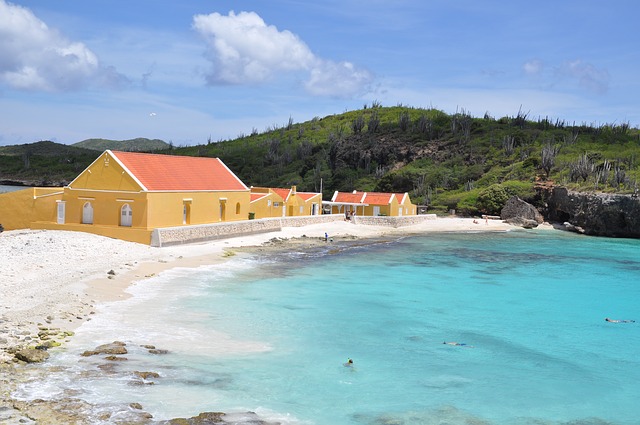
Boulder, Colorado, USA
- Target: 100% renewable electricity community wide by 2030, interim goal of 40% renewable electricity/50 MW local installations by 2020
- Status: In progress
- RES: Solar energy
- Implementation: Boulder is a small city located in the state of Colorado Rocky Mountains. In December 2016, the City Council voted to commit the City to 80% reduction in community greenhouse gas emissions below 2005 levels by 2050, 100% renewable electricity by 2030, and 80% reduction in organization greenhouse gas emissions below 2008 levels by 2030. At the time of the plan's adoption, 99% of Boulder's energy for electricity, heating, and transportation came from burning fossil fuels. Roughly half of the City's GHG emissions were coming from electricity. Approximately 22% of electricity was being generated by renewables, with approximately 30 MW of local renewable power generation installed. More than half of this was local solar installations.By 2030, an all renewable electricity system aims to include 100 MW of local renewables, which will increase to 175 MW by 2050. This increase signals the City's strategy in moving towards 80% electrification. Electric vehicles and heat pumps for example will replace equipment formerly supplied by natural gas, and will demand greater electricity supply.
To transition to all renewable electricity, Boulder's plan relies on a three part strategy. First is to reduce energy consumption. City-funded pilot projects aim to integrate efficiency with on-site generation and natural gas and petroleum replacement strategies. The City plans to expand demand side management services through the implementation of a municipal utility in lieu of the historic investor owned utility. To lower costs of owning on-site solar, the City plans to establish collective purchase agreements that allow groups to own solar projects. This can help reduce the overall demand for the municipal utility to supply electricity and scale up renewable energy procurement or installation. Second is to replace fossil fuels with renewable energy. The City plan to analyse renewable generation and storage opportunities to replace fossil generation, as well as strategies for replacing natural gas and petroleum-based transportation. Third is to re-design critical community infrastructure and operations through mapping and strengthening resiliency and protection against power failure.
- Population: 108,090 (2016)
- Area: 25.85 sq mi (66.95 km2)
- Link: Local Renewable Electricity Generation Data Dashboard

Bozcaada, Turkey
- Target: 100% renewable electricity
- Status: Achieved
- RES: 17 turbine wind farm, solar arrays, hydrogen energy.
- Implementation: Bozcaada is an island of Turkey in the northeastern part of the Aegean Sea. It currently generates more power than it consumes. In 2000, a 17 turbine wind farm was constructed with a nominal power capacity of 10.2 MW energy, and produces 30 GWh of electricity every year. This is the equivalent consumption of 17,500 households or 30 times the consumption of the whole island of Bozcaada. The excess electricity produced is fed to mainland Anatolia through an underground and partly undersea cable. The hospital and governor’s mansion on the island uses hydrogen energy produced by local renewable energy sources. At the governor’s mansion, energy is captured with a rooftop 20 kW solar array and a 30 kW wind turbine. The electricity produced is used to electrolyze water into hydrogen. This gas is stored compressed and used later to generate energy or as fuel in hydrogen-powered cars.
- Population: 2,465 (2012)
- Area: 42.63 km2 (16.46 sq mi)
- Link: http://www.globalislands.net/greenislands/index.php?region=6&c=58
